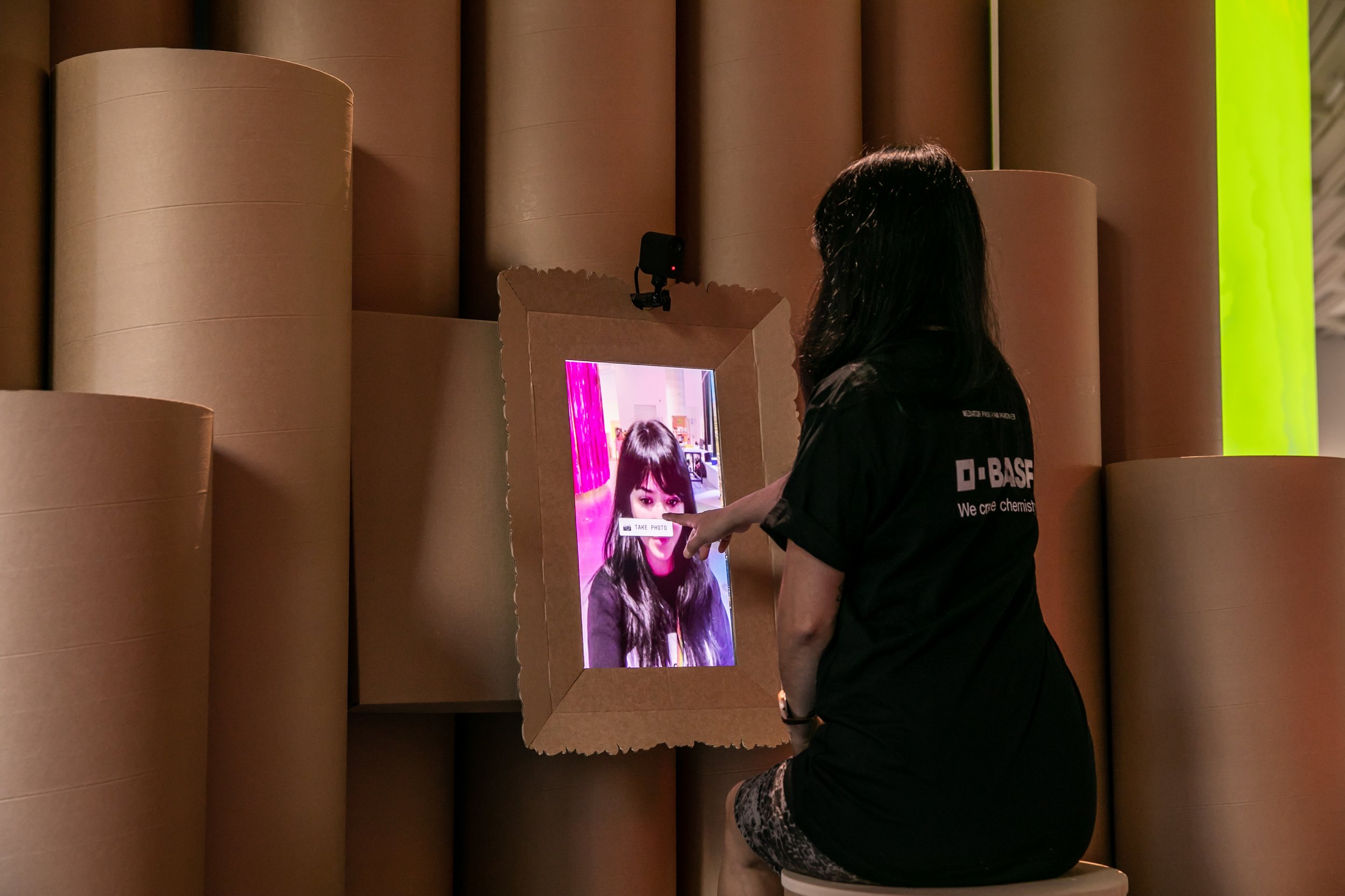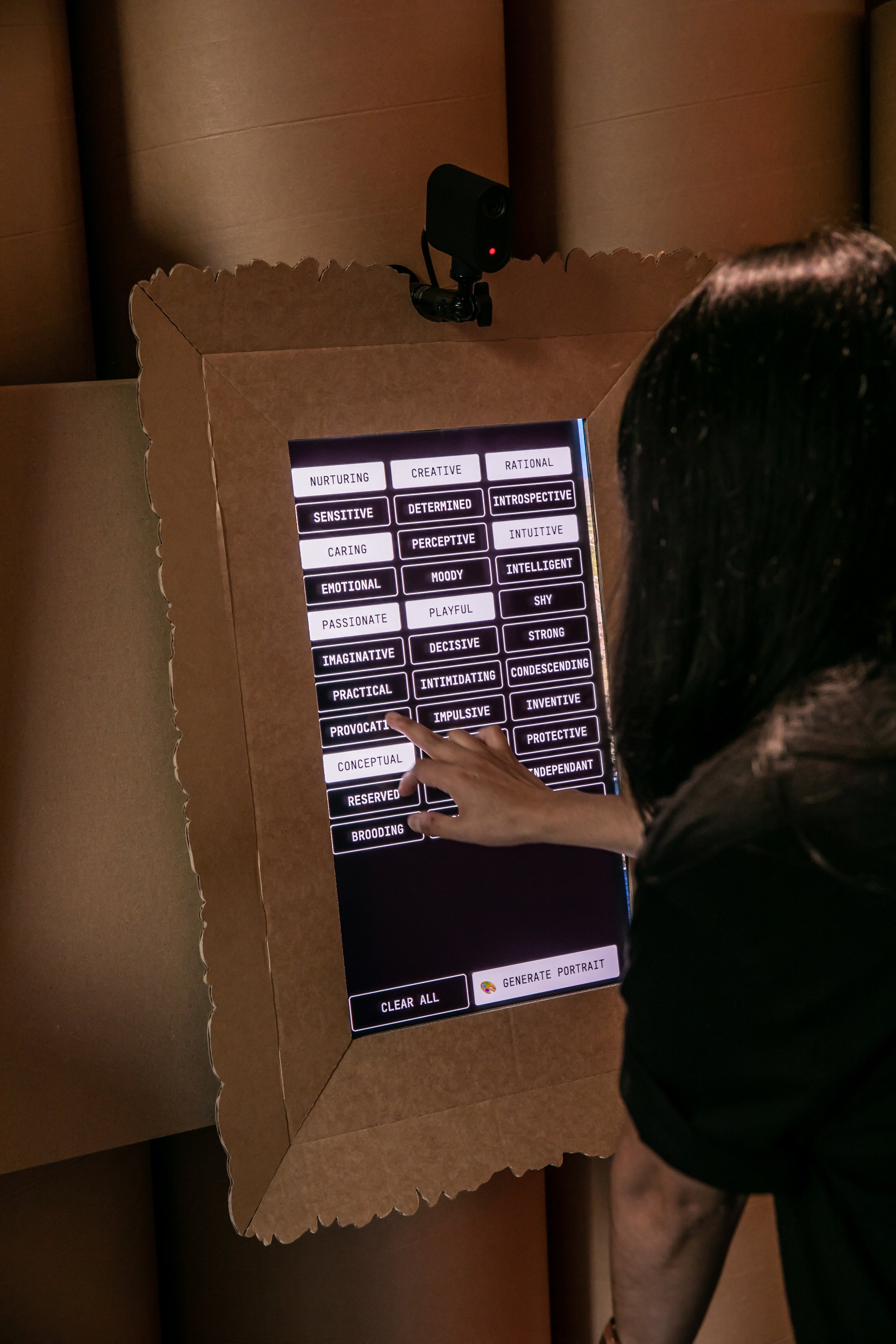The Making of a Science Gallery exhibit with J. Rosenbaum and Mel Huang
During the Open Call process for BREAK THE BINARIES, our curatorial team met J. Rosenbaum. Their research about how AI intersects with gender was a perfect fit for the exhibition which was to blur, bend or break society’s ideals about gender.
We introduced J. Rosenbaum to creative technologist Melanie Huang, a longtime collaborator with Science Gallery Melbourne (she’s worked on iconic projects for us such as Rainbow Wheel, Anthropomorphic Machine, Your Face is Muted, p@tch AND Fields) and they created the exhibit Self_Portrait.
Melanie Huang: Your research is about getting deep into those topics. Whereas, as a creative practitioner, I stay quite surface level on topics and concepts, focusing more on how are people gonna use it and how people are gonna interact with this particular artwork.
J. Rosenbaum: Definitely. I delve deep because, well, that's part of my research, obviously, but also it's such a passion. I get so excited working on all of these little bits and bobs and getting involved in them all.
And that's why it's so wonderful to have somebody to bounce ideas off and work with to make such an amazing, interesting collaborative piece. It's just been so much fun.
MH: I wanted to say I loved the way you were always bringing up new ways of doing things. Like as we encountered different problems, like… the video frame rate or whatever it was… You were thinking about, so we could transfer into a different library or calculating things differently that would make it faster or would make the experience better. And I loved where we started and where we ended up..
JR: In a completely different place.
MH: It's a completely different place. And it was great to work with people that are flexible like that as well. Because sometimes, you know, as a designer, when you get a brief, the brief is set. So you have to kind of work to that. And so it's great when people can be kind of flexible with their technologies and their preferences and things like that.
JR: Definitely. People need to need to be able to bounce and rebound and change pace and, you know, work things out. I mean, and we were working things out up until opening night.
MH: I think Science Gallery really encourages that. We went in this knowing that it was gonna be an experiment, knowing that it was going to evolve and change as we kind of found out more about the technology.
And I think also kind of, I think I always see this where artworks are kind of using technology in a, in a weird way, it's not necessarily the way that it was intended to be used. So you are always gonna come up with like weird things that it can't do or isn't able to do.
Things like how we wanted to mount the visuals in portrait. And the idea of a portrait webcam doesn't work, because when you flip it, [the camera] doesn't recognise faces anymore. That was a strange thing to think about, but it's like, why doesn’t the AI doesn't know how to recognise faces if it's not in the orientation that a face usually is in? Because I guess the AI doesn't know it’s [looking at] faces necessarily. It's just looking to match pixels with pixels.
JR: Exactly. It's looking for those coordinates. It's looking for triangulation of what it knows and Yeah. If you change it even a little, you can completely disrupt what an AI sees.
MH: This is the most online collaboration I've ever done. Where we kind of log in and send each other screenshots and videos. I really love that way of working because it allows you space to kind of reflect on things and give it a couple days to kind of marinate in your head as to what's the problem. And then you can kind of log on and, and be free to kind of chat in that way. I really loved that.
JR: I did too. It was so free feeling and creative and yeah. It didn't matter what time the emails came in or you know, what time I had a sudden idea or you did, it was just like, let's go. It was great.
MH: I feel like it's conducive to like sudden ideas. When you're doing workshops or something with a very strict time limit, it's kind of bound to that time limit. You have like two hours and whatever you come up with is kind of it. Whereas I feel like we had like that whole development period to just like bounce ideas off each other which was really nice. Our Miro board inspiration board was great. We had this whole mood board with all the references that inspired us..
JR: All the ideas! To throw things at.
MH: And see what stuck. And the next day, like some of the ideas probably were awful, but they didn't make it. But it was great to have that that vehicle. Because sometimes when you're working with technical people in general, they're not so visually based. But I feel like cause you're a technical artist, you are very visually led. So together we were able to kind of make this mood board and feel like we're on the same page.
You know, sometimes when you share inspirations they're kind of like, I really don't understand how that, how that relates. Whereas I feel like all the references we sent back and forth were like really like, ah I know where that's going. Yeah. Like I can see how that's influencing that and the kind of eventual vibe of the piece. I like it when I work with other visual people.
JR: That’s funny cuz during my studies I was constantly told off for not being for being too technological or not being artistic enough. Really not not being, yeah. Not bringing the art into my creative practice. I gained a lot of insight for working in creative practice as a creative practitioner in this project, especially collaboratively cause I don't usually do collaborative work. So being able to bounce ideas and work together was inspiring.
MH: It was so exciting. I’ve done a few Science Gallery projects where usually I am the technical skills, so I'm just kind of left there to troubleshoot myself. I work like that quite a lot in my practice. But to have someone else that kind of understands what you are going through or like what you're trying to troubleshoot — I feel like the project really kind of benefited from that because there were two minds instead of one mind. I can only do so much and you could only do so much. And, and together we were able to kind of have different ideas and different approaches.



